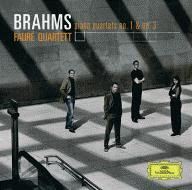Film and Music Acousmatique
The film industry has taking the role of sound to new heights as we explore the meaning of sound (and music) in terms of the images we see. We, as viewers, are often aware of the music and the tension it can bring to a scene. Practically everyone can ominous double bass pounding in "Jaws" just before the shark would attack or the screaching high strings in "Psycho". But often the music is underplayed, subtle to the point of disappearing into the scene so we don't realise the effects on our psychi. The music, if done right, can add emotional impact to a scene, to a film, so the end result is a more powerful response - and a more enjoyable experience.
Then there is the organic sounds of a film, the sounds we expect to hear (and think we expect to hear based on the images of the screen) - the creaking of a door, or the electronic hum of machinery. Sound Design has become a huge part in the creation of film today. Foley artists, who used to just add footsteps and gun shot into films, are now creating a host of sound layers to heighten our film experience. In the film "Bourne Identity", John Powell was the composer, but Karen Baker was the Supervising Sound Effects Editor. In this film they used a variety of different engine sounds to recreate the sound of the mini chase scene. The actual engine sound of a mini wasn't quite right to create the effect of the high speed chase. However, if you listen to the music in that plays during the scene, there are pitches that echo the same pitches in the engine sound. So, not only did the sound engineers create the engine sound using a variety of different sounds layered together, it was pitched so the music could meld with it. In a previous post I spoke about the use of pitched sounds in the film "Seven", so this sort of sound usage is nothing unique.
I am not a fan of électroacoustique music or acousmatique. Luc Ferrari is a composer who produced a series of very interesting sound-scapes. While some credit them as musical compositions, I prefer to label them Sound-scapes as they are less music and more a journey through recorded organic sounds. There is no doubt the impact his work has had on understanding the relationship of sound and music. However, (IMHO) his électroacoustique music falls more in the realm of sound design than music. This doesn't diminish its power or relevance; it just gives it a different realm for which it can be defined and explored and associated with other like works.
Where is all this going?
Often times, when working on student projects, the blend of sound design and music composition gets blurred. Some of this is because young film makers don't understand the role of sound in their films and some is because there is generally no budget, so people perform multiple roles. The result is I occasionally get asked to include sound effects into the film as well as provide music. One of my most recent projects I was asked to actually edit the sound, to sooth out the rough spots. This was very illuminating!
The film doesn't have much dialog; most of it is just city street sounds, running water or sounds of an office (sans people - so the hum of machines). In moving from one scene to another it was necessary to add some effects, equalising and compression to the sounds to even them out and highlight the desired aspect. In doing so I discovered there were some very similar elements in the very different sounds. If I took out the high end of the street sounds there was a low frequency hum very similar to that of the office sound. If I highlighted the upper register of the office, the "hiss" was similar to the flowing water. As the scenes move from one to another it was possible to fade from one sound into another by shifting the equalisation of the sound as well as the volume. The end result is an interesting, nearly seamless shift from one scene to another. There are moments when the sound jumps from one to another, but most of the time the blend is almost unheard. If you close your eyes it's difficult to tell when one scene ends and another begins.
As I began composing music for the film I am going to focus on those elements of the sounds. I plan on identifying a collection of pitches found in the film and use those from which to create the score. Then, by imitating the sound through the music, I should be able to create something that doesn't catch your attention, but rather just becomes part of the overall sound-scape as if it was there during the filming and not an afterthought.
Looking forward, I would like to work on a project where the sound comes first - a series of organic sounds are recorded, then manipulated to where they blend and meld losing their individual identities. Then create a film where the images initially match the sounds, but as the sounds are manipulated, blended, the images are switched to be of objects other than ones associated with that sound. The overall effect should get people to think about the sounds and the images and how they are associated, more in common than we might think.

Comments